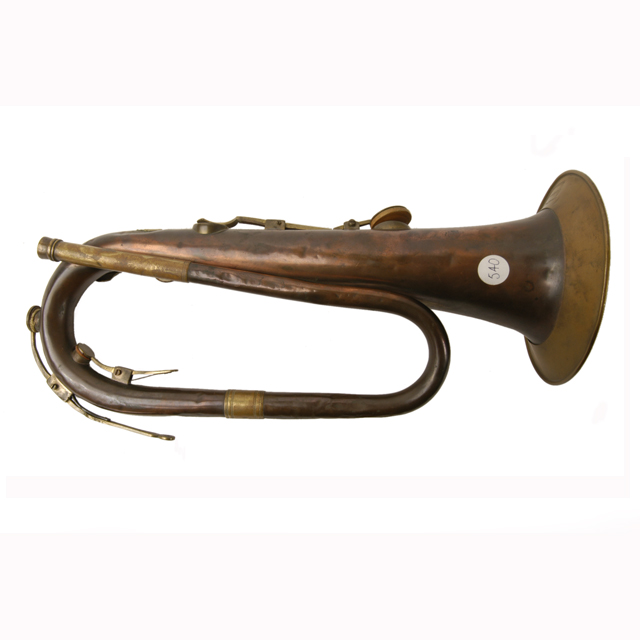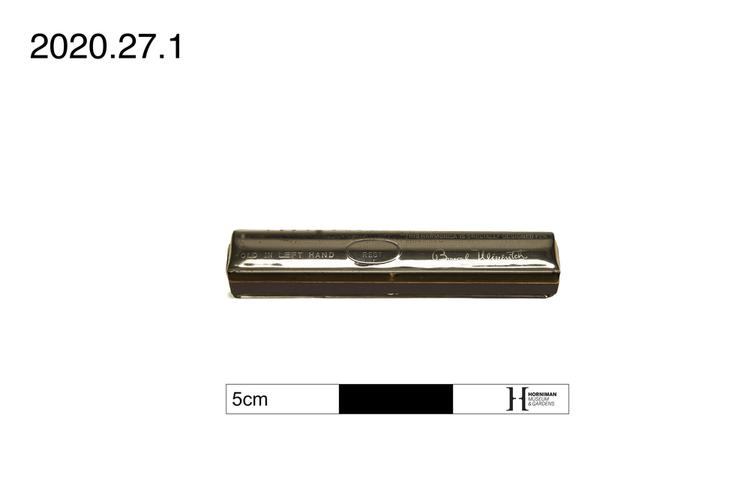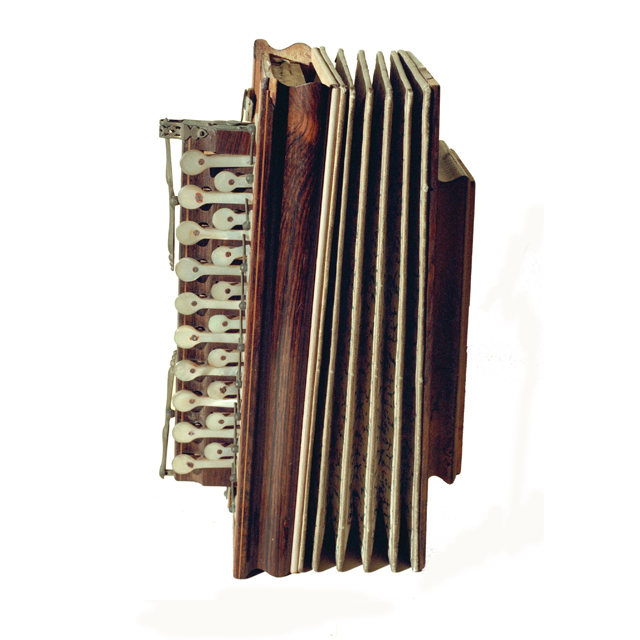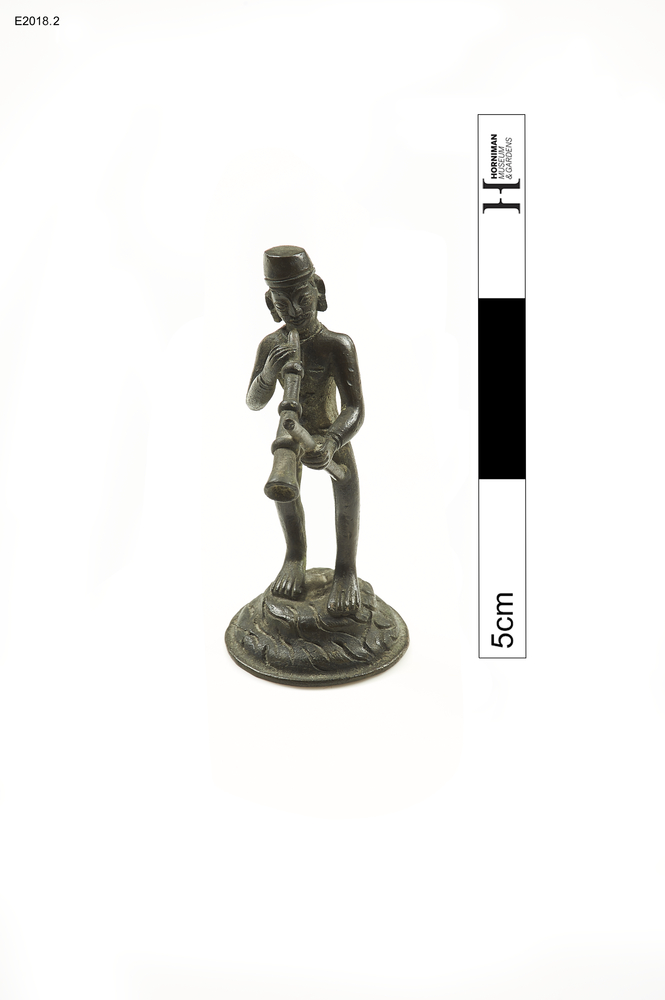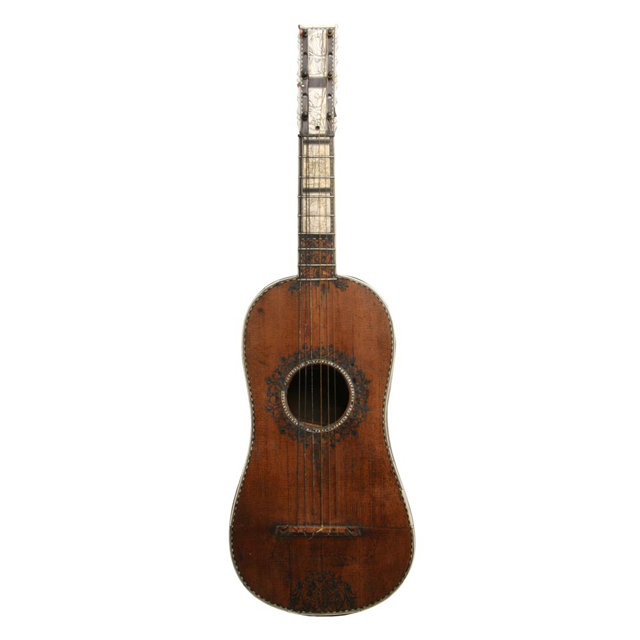
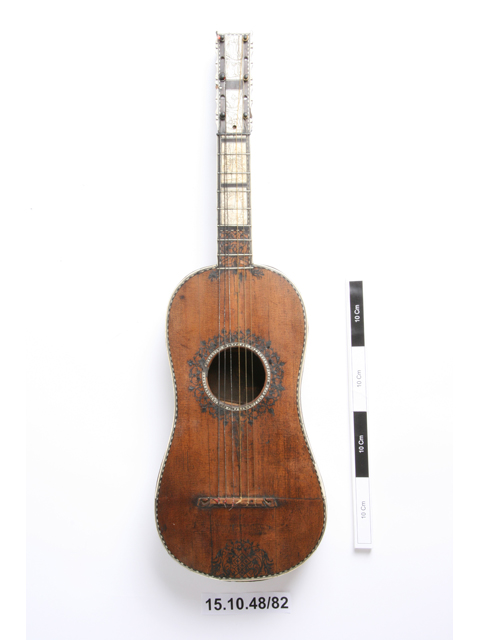
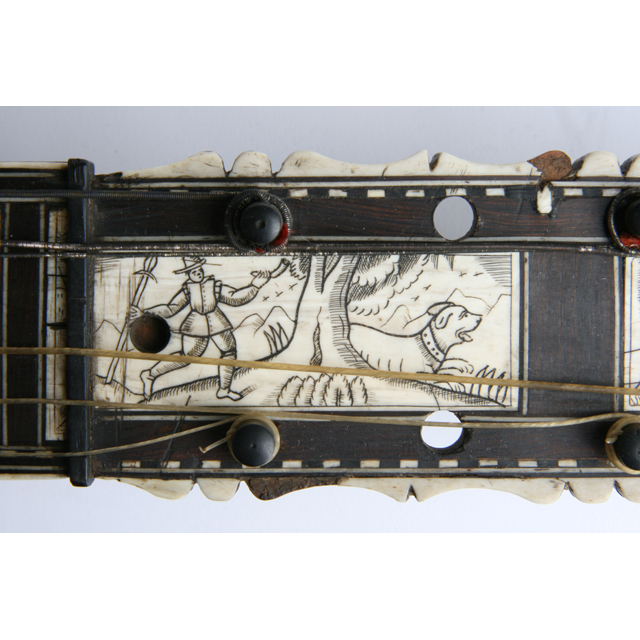


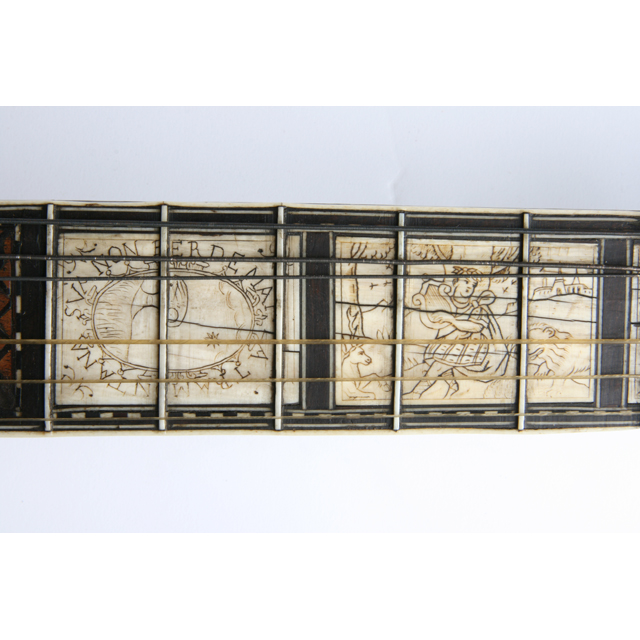
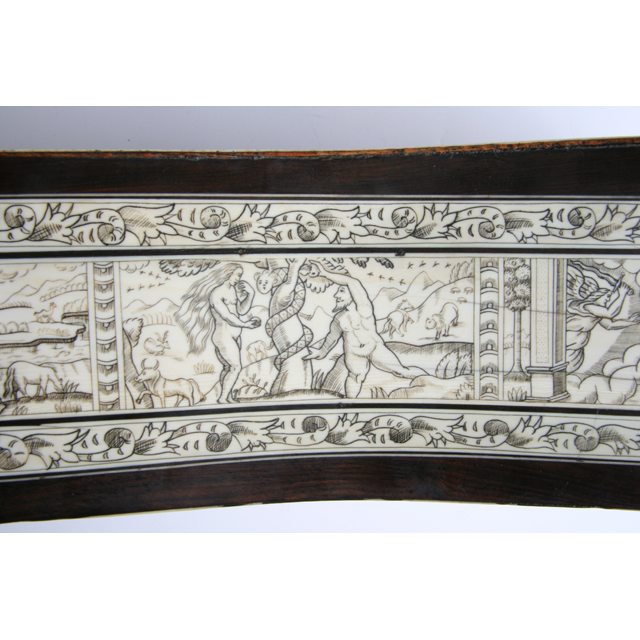

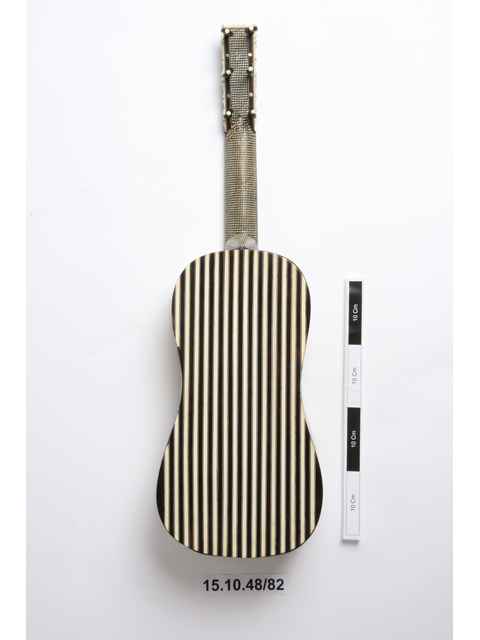
Guitar. Design incorporates features of the normal guitar and of the chitarra battente, having a flat back and bent-back table. The back is made from alternating strips of ebony and ivory. The back of the neck is inlaid with a chequered pattern of ebony and ivory. The pegbox is drilled for ten pegs with only six rear entrant pegs. This suggests the guitar originally had five double courses rather than six single courses. In the centre of the pegbox, above the nut is a hole, probably for a button which would carry the strap. There are three metal and three gut strings. The fingerboard has ivory frets. The bridge is crude but there are marks of an original, moustachioed bridge. The lower end of the table has been reinforced, indicating the guitar had the same metal stringing as a mandolin. Mother of pearl purfling around sound hole, florid ornamentation on table. On the ribs are two strips of ivory bearing pen illustrations of biblical scenes from Adam and Eve in the garden of Eden, through Noah's ark to the building of the tower of Babel. On the fingerboard and pegbox are ivory panels depicting Orpheus charming the beasts and hunting scenes. The lower panel bears the motto: SVA NON PERDE MAI LA TRAMONTANA. At the base is the date 1626.
This beautifully ornate guitar was collected by Percy A. Bull, who worked as an official in the House of Commons for many years. His collection of over three hundred instruments was acquired from Bull's widow by the Horniman Museum in 1948. The collection comprises mainly stringed instruments of early European, African and Asiatic provenance. The literal translation of the motto is: never loses her North wind. This is an old expression meaning this guitar never loses her bearing, or perhaps never loses her tuning.



